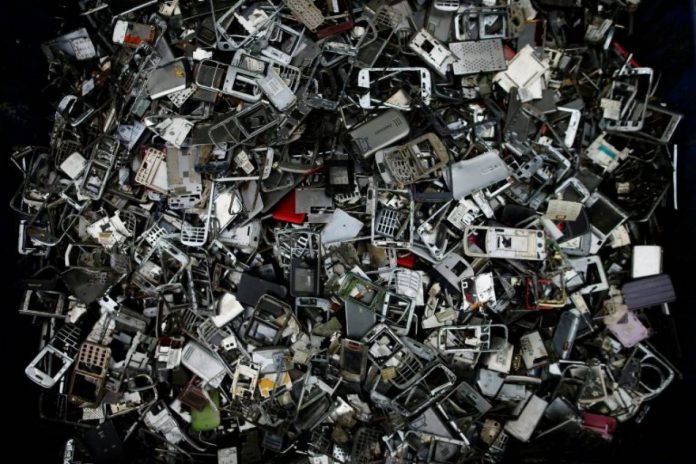Major tech giants have joined hands in a new initiative to control the eruption of ever bottling up of e-waste by creating a circular economy for electronics by 2030
The project comes as humanity’s insatiable appetite for smartphones, household appliances, and electronic car parts combined with the short lifespans of many tech products have made e-waste the planet’s fastest-growing refuse.
According to the United Nations, more than 50 million tonnes of electronic waste was discarded in 2019, with the vast majority ending up in landfills and on scrap heaps.
Those products contain gold, silver, copper, and platinum as well as highly-prized rare earth metals. With only 17 percent of products recycled, the UN estimates that materials worth more than $55 billion (50 billion euros) are being wasted every year. Meanwhile, more must be mined to make new products, sparking environmental and human rights fears.
The new initiative, led by the World Business Council for Sustainable Development and the World Economic Forum, has outlined a vision for how the industry might break this habit. But this is only a first step and does not include financial commitments or firm targets, the groups’ caution.
Companies taking part include Cisco, Dell Technologies, Glencore, Google, KPMG International, Microsoft, Sims Limited, and Vodafone.
It is foolish to assume that we can produce as many products as we want without thinking about what happens at end of life. Ideas range from designing products so that precious metals are easier to extract, to creating an “eco-label” system, but the initial step was more modest—coming up with a shared idea of what a circular economy might look like.
this initiative will make sure that when one company is going in one direction, another company isn’t going in a different direction with the same goal. Half of the materials used by these big bulls of technology will be recyclable and renewable by 2030.
In a separate announcement in October, Apple said its newest iPhones would be produced using completely recycled rare earth materials.
‘New normal’
Just over half of all emissions in the IT sector come from the use of equipment and data centers, with the rest from production. One of the key ways to bring down those emissions and meet net-zero targets is through a more circular economy—reusing, recycling, and extending the life of products.
A briefing from the European Environment Agency last year said research into smartphones, televisions, washing machines, and vacuum cleaners showed that their lifespan was more than two years shorter than either their designed or desired lifetimes.
There are nearly 700 million old “hibernating” mobile phones in Europe alone, amounting to some 14,920 tonnes of gold, silver, copper, palladium, cobalt, and lithium with a value of over a billion euros.
Pennington said that while stronger waste regulations are crucial, more specialized recycling facilities are also needed to process the sheer volume of e-waste.
There are also concerns about creating incentives without ensuring that products are actually recycled, after illegal dumping of household plastics, particularly in Southeast Asia, has caused severe pollution.
The idea of an eco-label, already being considered in Europe, could help people choose green electricals, but Edgerton said recycling principles would need to become the “new normal” to make a difference.
By Mayank Vashisht | Technology Journalist | ELE Times








